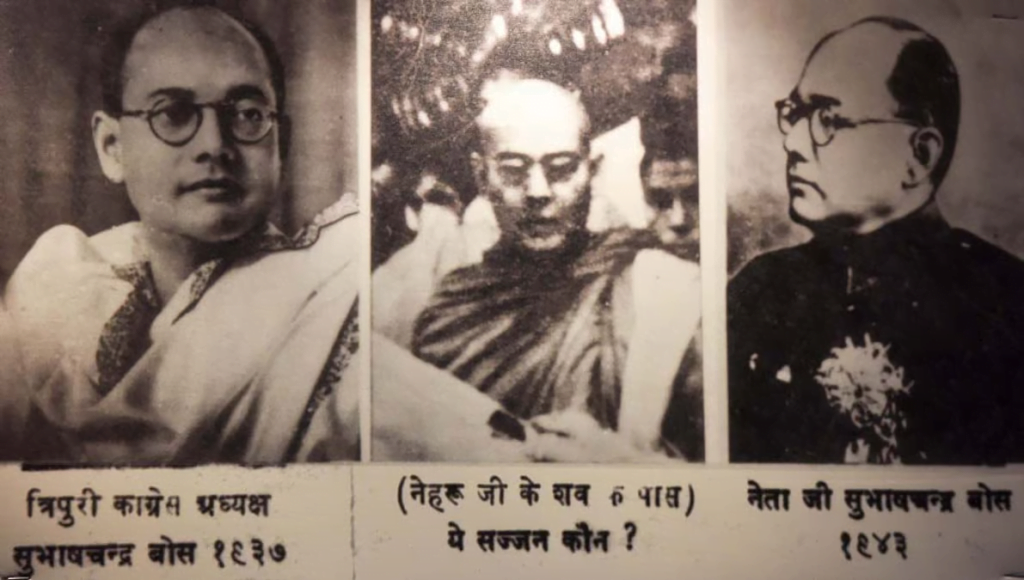In India, the history is filled with stories of brave soldiers from the Paramilitary forces. The bravery of India echoes around the world. To honor and boost the respect for the military, every year on January 23rd, we celebrate ‘Parakram Divas.’ This day holds special significance as it marks the birth anniversary of the great freedom fighter, Netaji Subhas Chandra Bose. While initially, there were no specific events on his birthday, in 2021, the current Prime Minister of India, Narendra Modi, declared the day as ‘Parakram Divas.’ This decision was made to commemorate and celebrate the valor of Netaji Subhas Chandra Bose, making ‘Parakram Divas’ an annual tradition.
Subhas Chandra Bose, a luminary in India’s history, is celebrated every year on January 23rd as Subhas Chandra Bose Jayanti. This article delves into the life, achievements, and the indomitable spirit of Netaji, exploring why his contributions to India’s freedom struggle are eternally revered.
Early Life and Roots

Birth in Odisha Born on January 23, 1897, in Cuttack, Odisha, Subhas Chandra Bose hailed from a Bengali family. His parents, Janakinath Bose and Prabhabati Devi, laid the foundation for a legacy that would shape the course of India’s fight for independence.
The Architect of Freedom

Role in India’s Independence Netaji played a pivotal role in India’s journey to freedom. With powerful slogans like “Jai Hind” and “Give me blood, and I shall give you freedom,” he ignited the passion for liberation among the youth.
Formation of Azad Hind Fauj Netaji founded the Azad Hind Fauj, the Indian National Army (INA), a testament to his commitment to a free India. His courage and leadership inspired many to join the struggle against British rule.
Stirring Calls for Independence With rallying cries like “Jai Hind” and impassioned speeches, Netaji galvanized the youth, instilling a fervor for independence. His iconic slogan, “Tum mujhe khoon do, main tumhe aazadi dunga” echoed across the nation.
Celebrating Netaji Today

Subhas Chandra Jayanti to Parakram Divas Initially celebrated as Subhas Chandra Jayanti, the day took on new significance in 2021 when Prime Minister Narendra Modi declared it as Parakram Divas. This move aimed to recognize Netaji’s valor and contributions to the nation.
Annual Commemoration Since then, the anniversary of Netaji’s birth is commemorated annually as Parakram Divas, honoring his sacrifices and dedication to India’s freedom.
Fascinating Facts about Netaji

Birthplace and Family Netaji was born in Cuttack, Odisha, on January 23, 1897, to Janakinath Bose and Prabhabati Devi.
Founding Azad Hind Fauj His crowning achievement was establishing the Azad Hind Fauj, a force that symbolized the relentless pursuit of freedom.
Sacrifice for the Nation Despite his civil services success in England, Netaji relinquished his post in pursuit of India’s freedom.
Mysterious Demise The circumstances surrounding Netaji’s death in a plane crash remain shrouded in mystery, adding an enigmatic aura to his legacy.
Legacy and Inspirations

Enduring Impact Netaji’s legacy endures, inspiring generations to stand up for justice, freedom, and the spirit of nationalism.
Resonance in Modern India His principles and values continue to resonate, guiding the nation toward progress, unity, and resilience.
Conclusion
In commemorating Subhas Chandra Bose on Parakram Divas, we honor not just a historical figure but a symbol of courage, determination, and sacrifice. Netaji’s legacy lives on, reminding us that the fight for freedom is an ongoing journey that requires the spirit of Parakram, or valor.
| Contribution to Freedom Struggle | |
|---|---|
| Association with C.R. Das | Subhas Chandra Bose played a crucial role in C.R. Das’ political initiatives, enduring imprisonment alongside him. Bose served as the chief executive when Das was elected Mayor of Calcutta Cooperation in 1924. |
| Trade Union Movements | In the 1930s, Bose actively organized youth and supported trade union movements. His involvement led to his election as the Mayor of Calcutta in 1930 and President of AITUC in the same year. |
| Association with Congress | Bose stood for unqualified swaraj, opposing the Motilal Nehru Report that advocated dominion status for India. He actively participated in the Salt Satyagraha of 1930 and vehemently opposed the suspension of the Civil Disobedience Movement. |
| Congress Presidentship | Winning the Congress presidential elections in 1938 at Haripura, Bose was re-elected the next year at Tripuri, defeating Gandhi’s candidate Pattabhi Sitarammayya. However, due to ideological differences with Gandhi, he later left Congress. |
| Civil Disobedience Movement | |
|---|---|
| Imprisonment during World War II | During World War II, Bose faced imprisonment for participating in civil disobedience. He escaped to Berlin, reaching Japan and Burma, where he organized the Indian National Army (INA) to fight against the British. |
| Azad Hind and Indian National Army | |
|---|---|
| Bose’s Vision | In Berlin, Bose founded the Free India Centre and created the Indian Legion from Indian prisoners of war. Seeking help from Hitler and Mussolini, he addressed Mahatma Gandhi as the ‘Father of the Nation’ on Azad Hind Radio. |
| Formation of INA | Bose reached Japanese-controlled Singapore in 1943, issuing the famous call ‘Delhi Chalo’ and establishing the Azad Hind Government and INA in October 1943. Comprising Indian prisoners of war and civilians, the INA fought allied forces in 1944 but ceased to be effective after the fall of Rangoon. |
| Impact of INA | The INA experience stirred disaffection in the British Indian army, culminating in the Bombay naval strike of February 1946. This significantly influenced the British decision to hasten their withdrawal from India. |
| Composition of INA | The INA was non-communal, with Muslims holding prominent roles. It introduced a women’s detachment named after the Rani of Jhansi, showcasing its diverse and inclusive character. |
FAQs
Q1: What is Parakram Divas? A1: Parakram Divas is the annual celebration of Subhas Chandra Bose’s birth anniversary, acknowledging his valor and contributions to India’s freedom struggle.
Q2: Why did Narendra Modi rename Subhas Chandra Jayanti to Parakram Divas? A2: The renaming was to emphasize Netaji’s courageous and valiant efforts in the fight against British rule, highlighting the spirit of Parakram or valor.
Q3: What is Netaji’s most famous slogan? A3: Netaji’s iconic slogan is “Tum mujhe khoon do, main tumhe aazadi dunga” (Give me blood, and I shall give you freedom).
Q4: Where was Subhas Chandra Bose born? A4: Netaji was born in Cuttack, Odisha, on January 23, 1897.
Q5: What is the significance of Azad Hind Fauj? A5: The Azad Hind Fauj, founded by Netaji, symbolized the armed forces’ commitment to achieving India’s independence.














